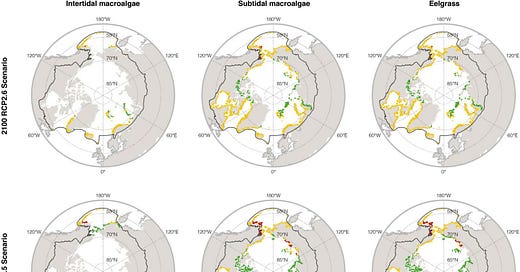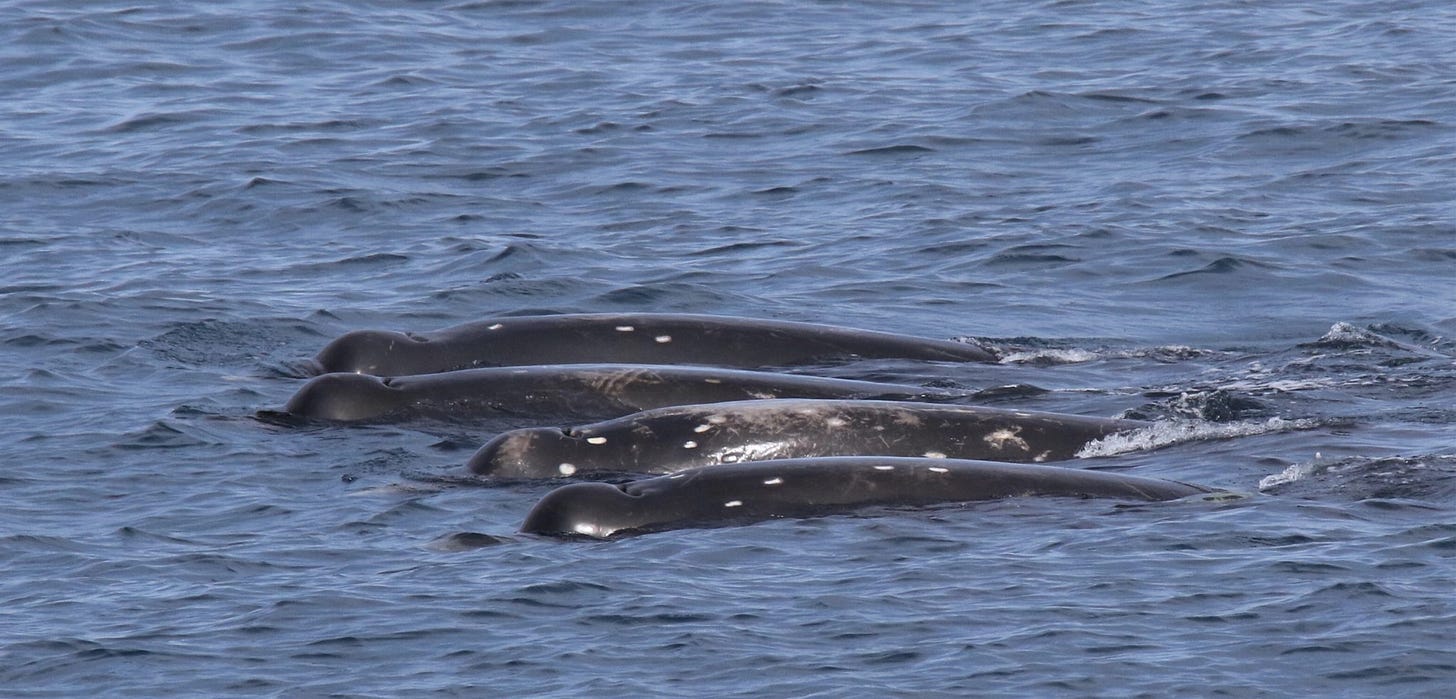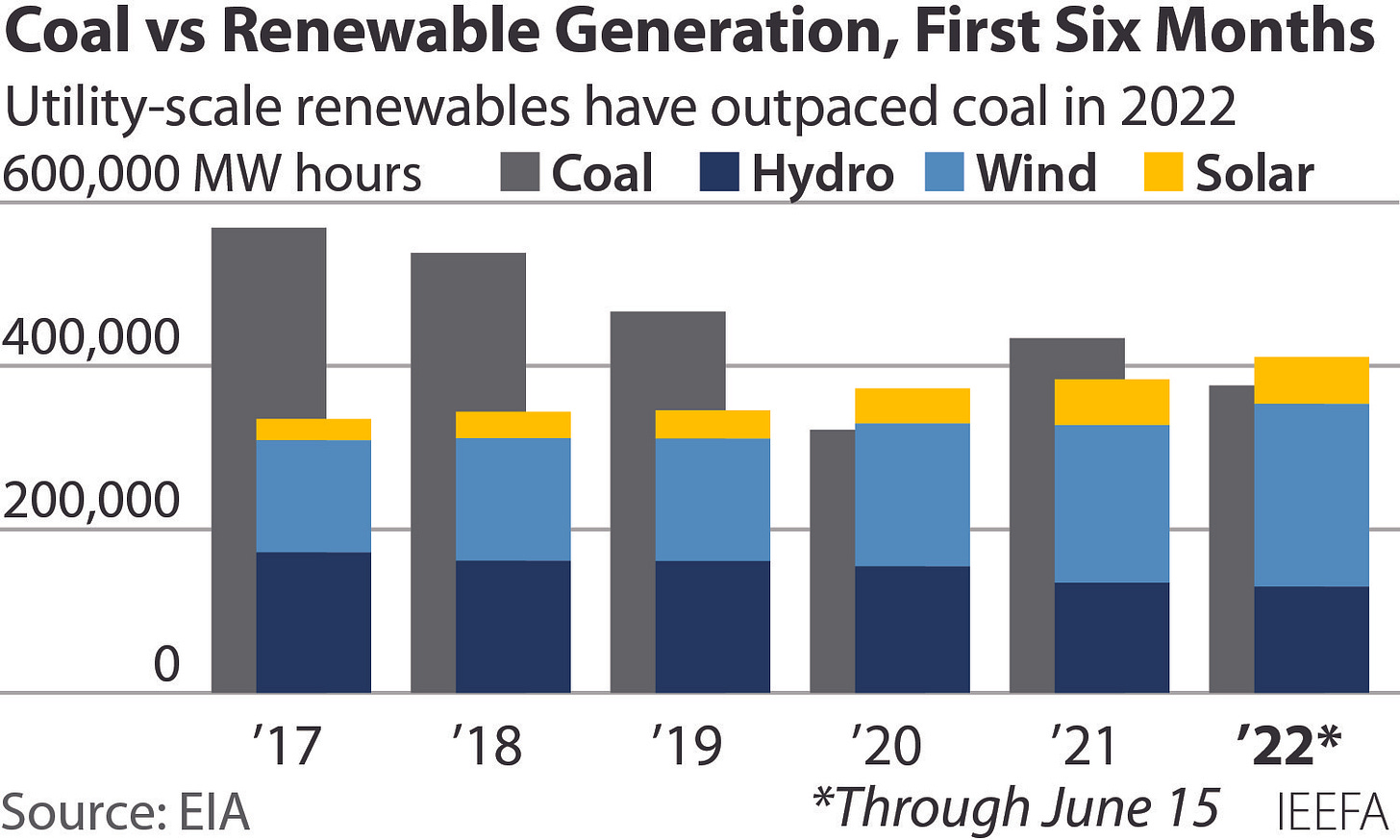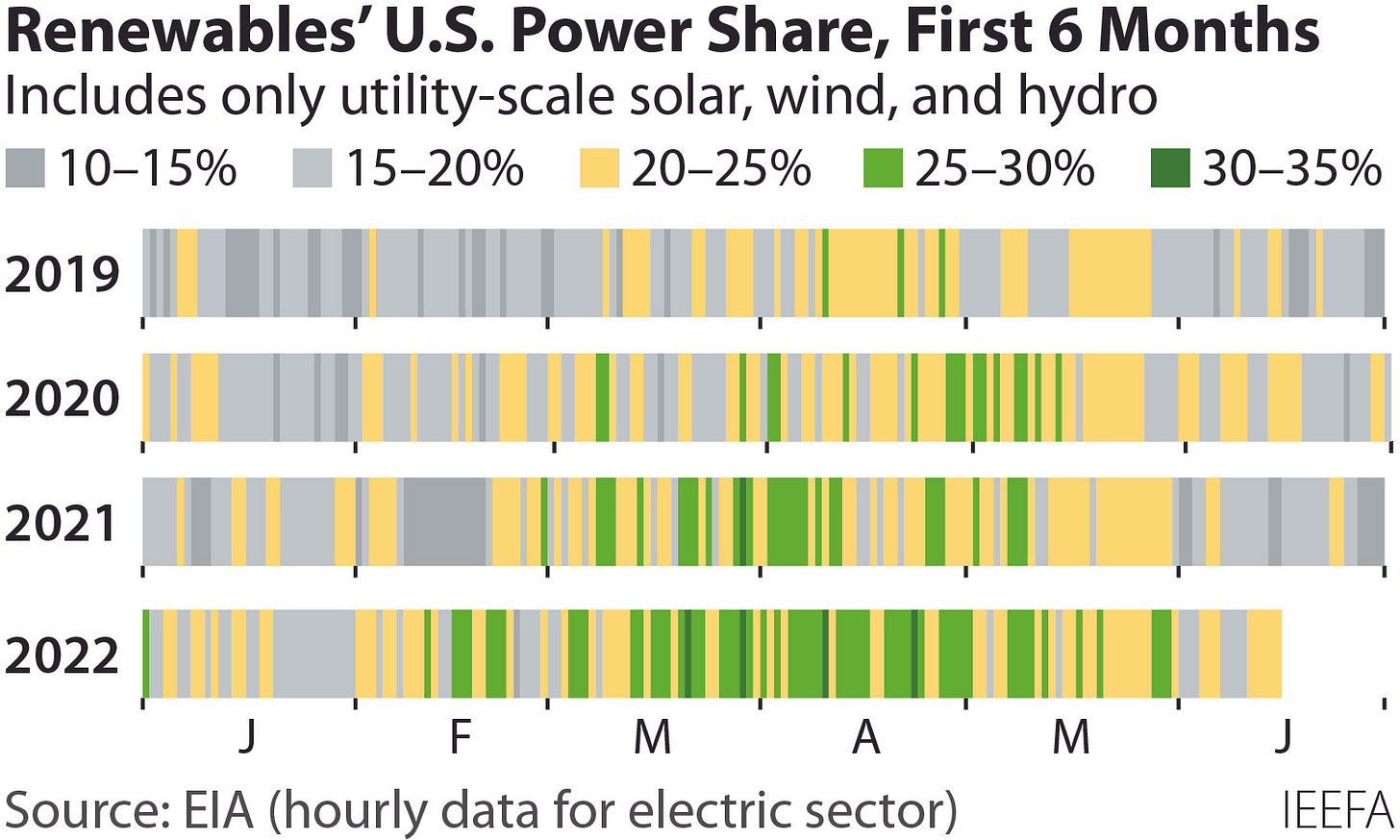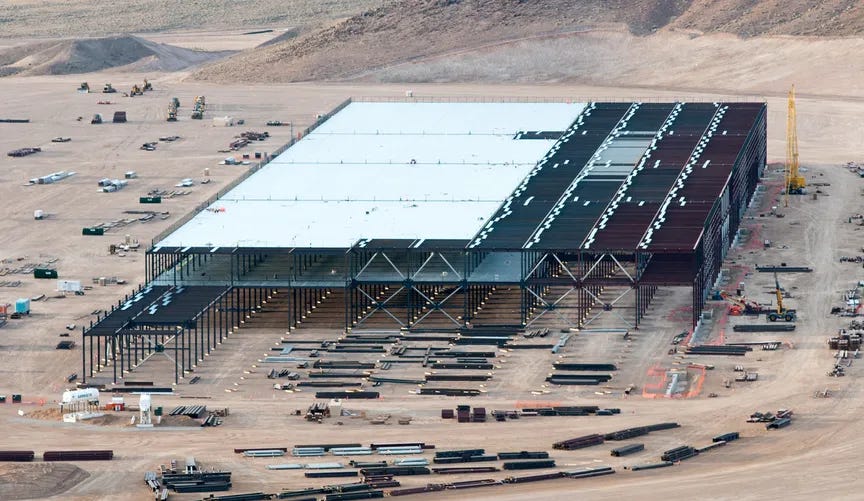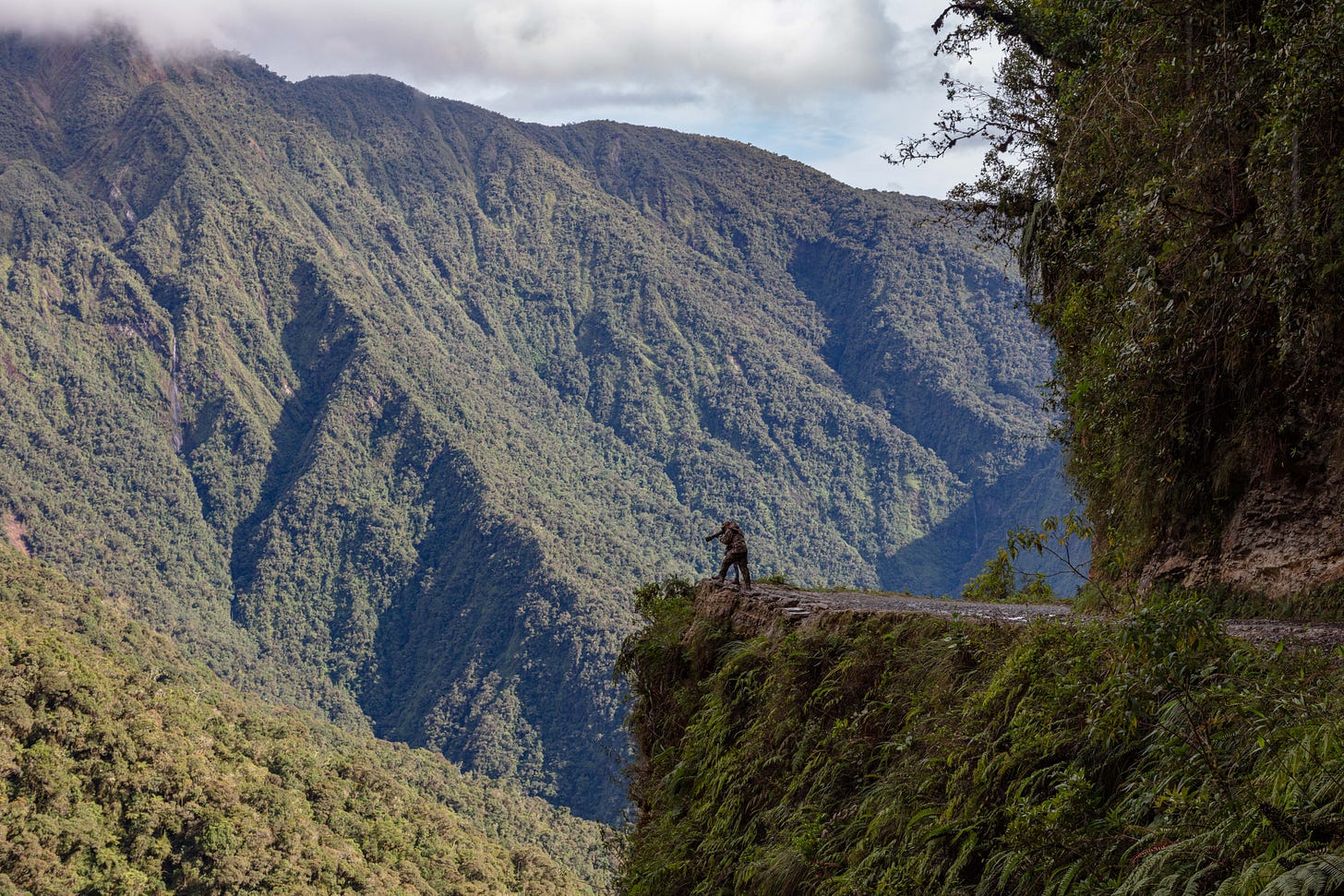The Weekly Anthropocene, July 27 2022
Dispatches from the Wild, Weird World of Humanity and its Biosphere
The Ocean
A new collaborative study found that eelgrass and brown seaweed are set to substantially expand in the Arctic Ocean due to climate change. In the warmest “RCP 8.5” scenario (now happily unlikely due to renewables progress, but still a good extreme-case benchmark), an area of new eelgrass and seaweed one and a half times the size of Ireland is expected to grow around the Arctic by 2100 (See scenario maps, above). Even under much less extreme scenarios, we’ll likely see eelgrass growing off Ellesmere Island in a few decades. While this is yet another sign of the complete transformation of the Arctic due to climate change and the collapse of sea ice-dependent ecosystems, it could have some unexpected long-term benefits, as eelgrass and brown seaweed are incredibly beneficial, ecosystem-supporting species and will likely foster rich biodiversity in their new colonies. And this time, perhaps humanity will have learned enough from its mistakes to let the new Arctic sea meadows grow, sequester carbon, and shelter marine creatures without dredging or overfishing them.
In an international initiative known as STORM (Sea Turtles for Ocean Research and Monitoring), scientists around the world are using the ocean’s chelonian denizens to help understand tropical cyclones. Following earlier, smaller trials, 80 wild sea turtles had sensor tags epoxied to their shells (a 5-minute, harmless procedure) and released back into the Indian Ocean between January and March 2022. The data has since flooded in, with the turtles able to easily withstand ocean and weather conditions that would shred drones and drive off tagged seabirds. In at least one case, a cyclone passed directly over a tagged sea turtle, did a natural “U-turn” and passed over it again, and the turtle was fine and kept swimming afterwards, having provided invaluable data on ocean conditions during the heart of the storm. This has the potential to scale up and provide high-resolution mapping of cyclones in real time, in a fascinating example of non-harmful human-animal coworking in the Anthropocene!
For the first time, humanity has a DNA-confirmed live sighting of Sato’s beaked whale (Berardius minimus), previously only known to science from individuals washed up on beaches. It’s part of a family of 24 beaked whale species, all relatively mysterious due to their deep-sea habitat. In the summer of 2021, a group of researchers studying orcas were shocked to see 14 whales that resembled the elusive species in the Pacific Ocean waters between Hokkaido and the Kuril Islands. They used a crossbow and floating arrow to take a small, non-harmful skin sample for genetic analysis, and the results are now in: the sample was a perfect match, and the whales they saw (pictured, above) were indeed Sato’s beaked whales. (The round white scars in the picture are bites from the evocatively named parasitic cookiecutter shark, also known as demon whale-biters). It’s great to see human knowledge of the ocean’s wonders advance!
Electrifying America
New federal legislation to support renewables now looks unlikely due to stalemate in the Senate (boo, Joe Manchin!). Fortunately, economics and superior technology are still making the clean energy revolution happen (the political/economic/social dynamics of which are nicely summarized here), aided by the relatively small but still helpful and constructive pro-renewables executive orders the Biden Administration keeps pumping out (here's the details on the latest). Coal plants are still retiring and more and better solar and wind projects are being built across America. S&P predicts that 145 gigawatts of coal power will retire in the US in the 2020s, with coal’s share of electricity generation set to drop from the current 22% in 2022 (already hearteningly reduced from 52.4% in 1997) all the way down to 5% in 2030, based on economic trends and already-planned closures alone. That’ll prevent a lot of carbon emissions and save a lot of lives from air pollution-induced disease.
While renewables are more than picking up the slack, as demonstrated in a new report from IEEFA, the Institute for Energy Economics and Financial Analysis. Check out the summary graphs above and the full story at this link!
And zooming in from this big-picture goodness, states across the nation are pursuing programs small and large to boost renewables (and their own economic interest) and prepare for climate change and the future of the Anthropocene in other ways.
Illinois is building new solar farms and battery storage projects on the sites of six recently retired coal plants in lower-income downstate communities, fulfilling the “coal-to-solar” provision in the landmark Climate and Equitable Jobs Act passed by the Democratic state government in 2021.
Delaware is starting a small pilot program to pay for free rooftop solar panels to low-income families and cover 70% of rooftop solar panel costs for moderate income families. The two-year Low- to Moderate-Income Solar Pilot Program will cover only 50 families total annually, or 100 families overall, but the state government hopes to expand it widely after this testing phase is complete.
Amazon has started delivering packages in 9 US cities with its custom-built electric vans, courtesy of the Rivian factory in Normal, Illinois. This method is set to expand to 100 US cities by the end of 2022, and the mega-company plans to have 100,000 electric delivery vans on the road by 2030;
The US Postal Service has planned for a while to buy a new fleet of mail trucks, with 165,000 “Next Generation Delivery Vehicles” in the purchase order. Under a Trump appointee, this would have included just 10% electric vehicles-unreasonably low given the immense expansion of EV infrastructure and decrease in prices. Now, on July 20 the Postal Service announced that it expects at least 40% of its new fleet to be electric vehicles-still too low, but moving in the right direction!
Massachusetts is on the brink of allowing its taxpayers to contribute directly to efforts to help the world’s poorest survive climate change. A bill currently before the Legislature and strongly expected to pass would take the world-first step of creating a slot on the state income tax form that would donate directly to the United Nations Least Developed Countries Fund.
California is allocating $5 million in this year’s state budget to support UC Berkeley, UC Davis, and UCLA research into lab-grown meat, a fascinating new technology with the potential to massively reduce carbon emissions and animal suffering in the near future. Fourteen lab-grown meat companies are already operating in California, and the Golden State is now the only American government to be funding this technology, following Israel, Singapore, the Netherlands, and China in striving to become a lab-grown meat hub.
Panasonic has committed to building a gigantic electric vehicle battery factory in DeSoto, Kansas, following the passage of a package of tax incentives by the state legislature. The factory will cost $4 billion, employ 4,000 workers and 16,000 more just for its construction, span 4 million square feet, produce $1.8 billion worth of batteries per year, and should have manufacturing equipment brought in by the end of 2023. It’s not built yet, so above is a picture of the already-extant joint Panasonic-Tesla Gigafactory in Nevada when it was under construction in 2015. The new Kansas facility should look similar, but bigger.
“This project will be transformative for the Kansas economy, providing high-quality, high-tech jobs while bringing a new industry to the state that is forging a more sustainable future,” said Kansas Governor Laura Kelly (D). “This is a significant milestone for Kansas that is sure to drive economic growth and development.”
This is the largest economic development project in the history of Kansas, and will create the largest dedicated electric vehicle battery factory in the world-unless a bigger one is built first! Great news.
Bolivia
In 1930, a highway called the North Yungas Road was opened between Bolivian capital La Paz and the north of the country, through the mountainous Andes. Unfortunately, a combination of sharp curves, narrowness, 100-meter cliffs, muddy conditions, frequent rain, and a complete lack of guardrails led to it becoming known as El Camino de la Muerte, the Death Road. From 1999 to 2003, this road saw an estimated 200 accidents and 300 deaths per year. In addition to this human toll, it substantially harmed wildlife in the area, as it sliced through richly biodiverse forest. Then, in 2007 a much safer new highway between La Paz and the north was opened, and traffic on the Death Road immediately dropped by 90 percent. (Since then, the now-little used Death Road has become relatively famous through thrill-seeking tourism and adventure TV shows such as the Top Gear Bolivia special). Now, researchers have returned to the area and set up camera traps to see how the local wildlife had responded to the decrease in noise, crashes, and roadkill risk. They found an abundance of life, noting 16 species of medium to large mammals and 94 wild bird species, including pumas, ocelots, jaguarundis, tayras, oncilla cats, dwarf brocket deer, and the endangered black-and-chestnut eagle. (Here’s the study, in Spanish). Pictured are the camera trap photos of an ocelot, long-tailed weasel, dwarf brocket deer, and mountain paca (starting top left, counterclockwise) and the Death Road terrain. Great news, and yet another example of rapid wildlife recovery after the threat ebbs!

